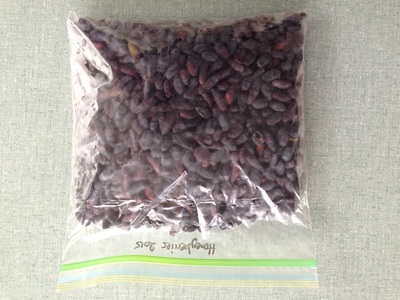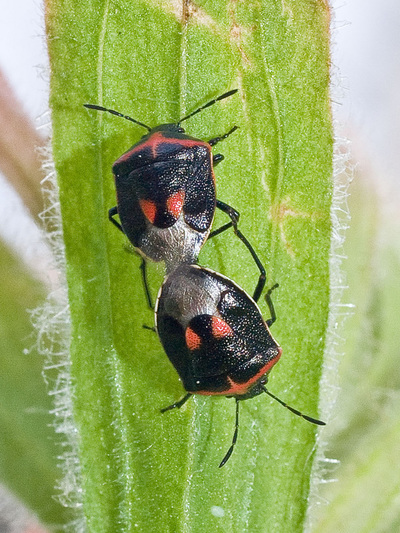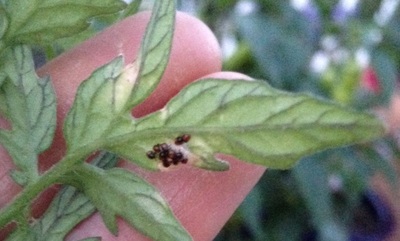When picking berries, I ended up with bugs in my hands and noticed that many berries were soft, indicating the bugs had been sucking out the juice. I have also been finding Wee Harlequin Bugs (see photo above) on many flowers, often breeding back to back. Apparently they love seeds but from what I have observed, it seems that they cause damage to developing flowers, which then dry up very quickly.
A while ago, I found eggs on my tomato stems – they are yellow, hard and in neat rows. On some of the developing flowers, I found tiny larvae in search of food and again, the flowers have already dried up. Some of my ripening tomatoes have a yellow, soft patch, more evidence of Wee Harlequin Bugs sucking juice.
So what can we do? When I catch a few bugs while doing watering or other garden care, I place them on a hard surface and squish them with my shoe. I have also gone out with a bucket of soapy water and tried to collect them en masse. (One of my organic gardening students took the shop vac to suck them off the raspberry bushes – pretty creative).
According to online info (see Rob Sproule’s article), the bugs will try to overwinter under leaf litter and mulch. As a strong advocate of mulching (since it does wonders in drought years and to feed the soil!), I’m not sure that I will have the heart to “remove plant litter” from my entire yard. It’s likely a good idea to dispose of any heavily infested plants and cut off seed heads that are not being saved.



 RSS Feed
RSS Feed